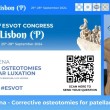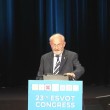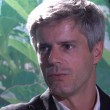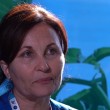
Interview with Mike Kowaleski DVM Diplomate ACVS and ECVS Associate Professor of Orthopedic Surgery Tufts Cummings School of Veterinary Medicine
G.S-S. Mike, I think that you have now been at the school at Tufts for about two years and I am curious to know whether you have managed to start up a research programme or to continue with the theme that you had in Columbus? Do you take a set period of time for research or do you have to ‘fit it in’ along with clinic duties?
M.K. My research programme at Tufts follows the same theme as in Columbus. We have just finished installation of a dual platform force plate laboratory for clinical research. In addition, we have an orthopaedic research laboratory with DEXA scan and a servohydraulic mechanical testing machine for biomechanical testing of limb models, implants and other devices. My schedule consists of 50% clinical service, 50% research and 50% teaching; as you can see, I’ve cut down to 150% effort!
G.S-S. So you have slowed down a bit! Can you enlarge upon the projects that you have at the moment, please? Are any of them involved with Post-Graduate Students?
M.K. All of our current projects are being completed in conjunction with veterinary students, Interns or Residents. We are in the midst of performing mechanical testing on a variety of bone plate systems for small animals and equine patients; both locking and standard systems. Since we are testing them with the same protocol, it is possible to make large comparisons between the various available systems. Also, we have just completed a study on bone anchors and another on bone substitutes. In addition we shall be evaluating several toggle pin suture/anchor constructs this spring, and during the same period we will embark on a prospective clinical trial involving digital templating for TPLO and TTA.
G.S-S. I have a feeling that you are really enjoying the four projects – or rather the three with another to be added. Without ‘giving away the shop’, would you please enlarge upon the reasons that have caused you to embark on the four different areas of research?
M.K. It’s common for us to have several lines of research running at the same time. I prefer Residents’ projects to be limited in scope, to ensure the Resident can complete the project in the limited time that they have. The anchor project, for instance, was directed to answer a specific clinical question regarding anchor eyelet orientation, and the effect on suture failure. The ‘bone substitute’ project was performed to evaluate various materials and to compare them to historical data on canine cadaver bone. The goal was to find the optimal material to use in the locking plate study. We identified a product that behaves much like cortical bone, and are using this material in the locking plate comparison study. The results of ‘second look’ arthroscopy in TPLO cases have identified full-thickness cartilage erosions on the medial tibial condyle and medial femoral condyle. It is possible that the procedure, as performed, is generating too much joint compression; so our goal is to find a balance between joint compression and stifle stability that will hopefully improve the long-term outcome.















